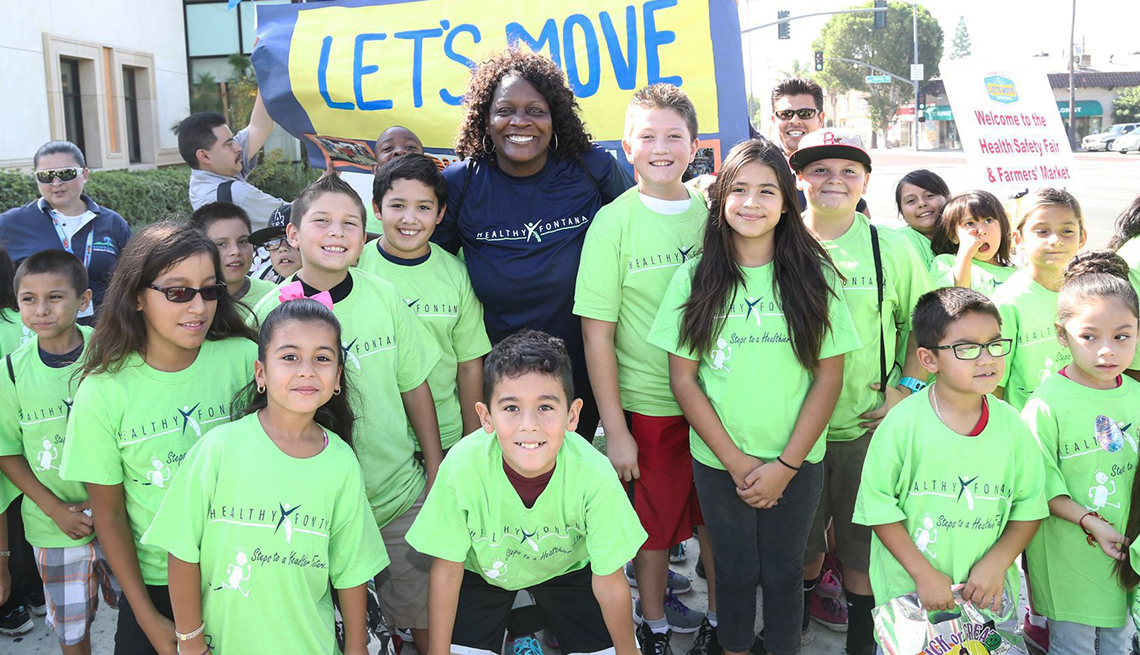
- Select a language for the TTS:
- UK English Female
- UK English Male
- US English Female
- US English Male
- Australian Female
- Australian Male
- Language selected: (auto detect) - EN
Play all audios:
* We're expanding programs for senior citizens, including transportation and nutrition programs. * We're expanding our after-school programming, which currently serves 3,500
students at 37 school sites. * We're improving our transportation corridors to improve mobility through the entire city." 4. WHAT CHALLENGES DOES THE CITY FACE IN ACHIEVING ITS
GOALS? "TO FIND OUT WHICH PARTS OF AMERICA ARE THE SAFEST, WE LOOKED AT THE FBI'S LATEST REPORT ON CRIME AND FOUND CITIES WITH VIOLENT CRIME RATES SUBSTANTIALLY BELOW THE NATIONAL
AVERAGE.... THESE WERE THE SAFEST CITIES IN 2012: [NO.] 15. FONTANA, CALIF. " — _Business Insider_ "Living within our means can be a challenge when having to balance the changing
needs of the community with the funding available. "Public perceptions can be challenging as well. Fontana is a work in progress and strives to overcome some past hardships, but we are
financially responsible, safe and actively making our city a better place for everyone. "Another challenge is that, at times, we've been a victim of our own success.
"We've built some state-of-the-art facilities. Our Fontana Community Senior Center is one of them. That center was so hugely successful that it became a challenge to accommodate
the many seniors that were coming to use it from inside and outside of our community. We had to add parking and expand programming. This has happened with other facilities as well. We
construct top-notch facilities that deliver quality services that attract community members and groups from both inside and outside the city." 5. WHAT CAN COMMUNITY LEADERS LEARN FROM
FONTANA? "In 2013, the City of Fontana was named by _Business Insider_ as being the 15th safest city in the nation for cities with more than 200,000 residents. This was a huge
accomplishment because Fontana had experienced a surge in crime in the 1990s, but since then has made impressive quality of life improvements. "In the 1990s we were on the brink of
bankruptcy, yet this year, as noted before, we were named one of the most financially strong cities in the nation. How did we change? ACQUANETTA WARREN'S ADVICE FOR NEW MAYORS * You
have the power, now stay humble * Communicate * Be inclusive * Respect different opinions * Take time to understand people and draw out their reasons "We tracked crime statistics to
specific multi-family tracts and we bought the properties and rehabilitated them and placed them under new management. That eliminated the source of crime. We also invested in our youth.
"To turn our city around we cut expenses, nearly 50 percent of non-public safety costs. We built reserves for emergencies and today we have $28 million in reserves. We kept our focus on
core needs and services and cut administrative and management staff. We put fees in place that fully mitigated the impacts of development. Tools for efficiency and effectiveness were put
into place. "Since 1999, approximately $130 million has been spent on parks. We opened several community centers, built the largest library in San Bernardino County, an aquatics center
and a water park. "We spent 10 percent of the annual budget investing in the community in areas such as graffiti removal within 24 hours, safe routes to schools, pavement repairs. We
invested in services and in projects and public safety. Departments worked as a team. We invested in technology and provided consistent leadership. We partnered with the faith community,
businesses, education and county to work together to make a safe city. "A strong foundation was built so we could expand over time. All of this has made us who we are today, which is a
city we're proud to look back on that takes a quiet pride in its accomplishments." _Portions of this article appear in the AARP publication __Where We Live: Communities for All
Ages — 100+ Inspiring Ideas From America’s Community_ _Leaders_. _Melissa Stanton is the editor of AARP.org/Livable and a senior advisor for the AARP Livable Communities initiative. Page
published October 2017_







